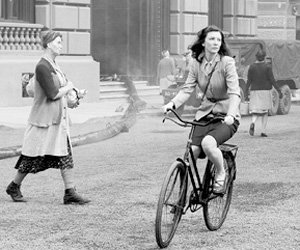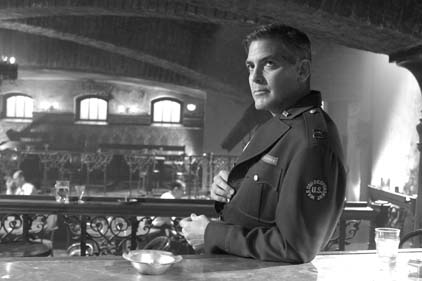LITTLE ROCK — Steven Soderbergh has indicated he would have been very happy as a journeyman director churning out movies under the old Hollywood studio system, taking a craftsman's pride in the manufacture of utilitarian entertainment products. Though that sounds a little like a narcissist feigning modesty - Michael Jordan expressing a desire to be part of a team - Soderbergh does have something of a journeyman's ethic.
While he might still be best known as the young auteur who kicked off the 1990s independent film boom by writing and directing the audacious sex, lies and videotape, his subsequent career has proved him to be a versatile and reliable director able to alternate between big-budget crowd pleasers like Traffic, Erin Brockovich and the Oceans Eleven romps with arthouse fare like Full Frontal and Bubble.
Movie
The Good German
<p><strong>Grade:</strong> C+<br /> <strong>Cast: </strong>George Clooney, Cate Blanchett, Tobey Maguire, Beau Bridges<br /> <strong>Director: </strong>Steven Soderbergh<br /> <strong>Rating: </strong>R for nudity</p>
It is best to receive Soderbergh's The Good German, a romantic mystery set in the post-war ruins of Berlin, as a movie brat's exercise in self-indulgence. While not exactly a bad film, the casual viewer is likely to be bored if not irritated by the film's formalist style and surprising lack of substance (the screenplay, by Paul Attanasio, is a weak shadow of the fine Joseph Kanon novel of the same name). The pleasures on offer here are esoteric indeed - Soderbergh famously shot the film using period techniques, which meant he banned wireless body mics on actors and the sophisticated zoom lens employed by modern cinematographers.
He used only harsh incandescent lights to reproduce the inky shadows of classic film noir and encouraged the actors to deliver their lines in the stagy, declarative style of pre-method Hollywood. (A style that itselfevolved in part because actors had to speak loud enough to be picked up by overhead boom microphones.)
Soderbergh even shot the film in the period-authentic non-anamorphic 1:66:1 aspect ratio, a "squarer" format than is commonly used today. (Since the movie was printed in the more common 1:85:1 ratio, you'll see vertical black bars on both sides of the frame.) The Good German was also filmed entirely on studio back lots.
But Soderbergh didn't adhere strictly to period techniques - the film was shot in color and digitally converted to high contrast black-and-white. The color film allowed the extensive use of green screen techniques, required for Soderbergh's footage to be combined with archival footage of the blasted city. While the actors tend to declaim and exhort, Attanasio's dialogue has a deliberately modern rhythm and sound. The probably intentional result is of cultural dislocation - sort of like hearing Mozart play cool jazz.
Some of you are probably wishing I'd cut out all the technical stuff and just get to the movie. Well, that's precisely the same sensation you're likely to feel while watching The Good German - unless you are the sort of moviegoer who geeks out over process details, you'll likely be underwhelmed by Soderbergh's homage to Casablanca.
If, on the other hand, what I've said so far has intrigued you, then you really need to see this film. While it's not the firsttime a filmmaker has attempted to evoke another era by adopting period techniques - Lars von Trier's odd and wonderful Zentropa (1991) played with some of the same themes anddevices, while Guy Madden's quirky career is based on making new old movies - it is genuinely experimental.
In that context, it's difficult to blame the actors, who in this context serve more as objects to be lighted than simulations of real people. Frequent Soderbergh collaborator George Clooney has the classic look to play American war correspondent Jake Geismer, who returns to Berlin ostensibly to cover the Potsdam Conference. More importantly, Jake hopes to find Lena (Cate Blanchett), the Jewish wife of a rocket scientist with whom he'd had an affair before the war. Jake's search for Lena is complicated when the American solider assigned to drive Jake around the city (Tobey Maguire) is murdered.
While the title raises the question of whether it is possible to escape atrocity without somehow being complicit with those committing them - it alludes to the "good Germans" who didn't know the Holocaust was going on under their noses - Soderbergh seems infinitely more interested in making an anachronism than a timeless film.
MovieStyle, Pages 45 on 03/09/2007

